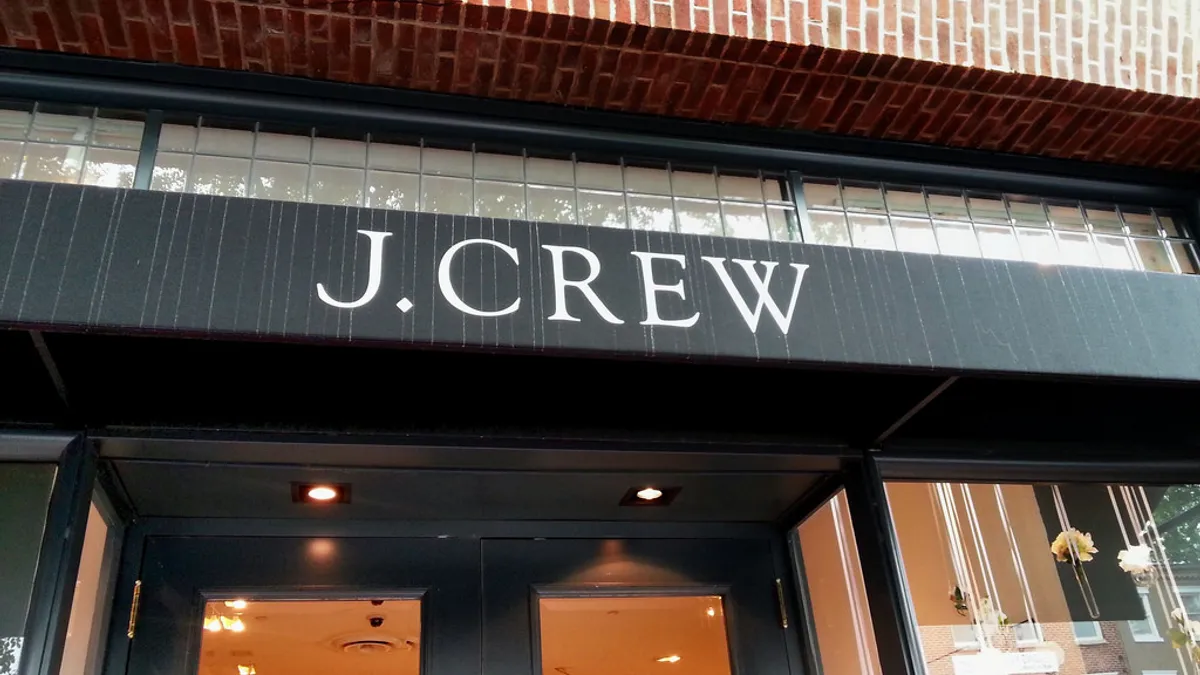Dive Brief:
-
J. Crew approached Amazon about buying the struggling brand, former J. Crew CEO and current chairman Mickey Drexler told Andrew Ross Sorkin at the New York Times' DealBook conference on Thursday.
-
Walmart and Target would also have been wise to approach the e-commerce giant, Drexler said, saying, "The thing that these big companies need is creativity."
-
But that doesn’t mean that as CEO he ever thought J. Crew should sell through Amazon, noting that the e-commerce giant would knock off any bestsellers and ultimately undermine the brand.
Dive Insight:
Ever since Amazon’s takeover of Whole Foods, speculation has only swelled about which other retailer the e-commerce giant might partner with (if not outright acquire) next. While location analytics company Foursquare recently made a splash with data-fueled musings that Amazon may be interested in scooping up home improvement retailer Lowe’s, eyewear startup Warby Parker or department store Nordstrom, it sounds like Drexler thought another player should be J. Crew.
"We went to visit some of his team members on that," Drexler said in the interview. "And to me, it would have been an extraordinarily smart thing to do."
Drexler is widely seen as a retail guru of sorts. It was arguably he who made the Gap a household name, growing that retailer into a global powerhouse with hundreds of locations worldwide and a keen merchandising focus, as well as being instrumental in a turnaround at Ann Taylor years ago, accomplishments detailed by Sorkin.
"He was the greatest re-inventor I ever saw," Howard Davidowitz, chairman of New York City-based retail consulting and investment banking firm Davidowitz & Associates, told Retail Dive earlier this year. "The Gap was and is the biggest apparel chain in the United States. The man is a giant, there won't be another one like him — he’s in the record books. He made the Fisher family multi-millionaires."
But he was impeded at J. Crew by a massive debt load that has interfered with the brand's performance and prospects, a tenure he characterized in the interview as having "not been fun at all." Drexler also said that in the last two years at J.Crew, in an environment when shoppers can check prices on any brand in the world at will online using the technology in their pockets, "no matter what you did it seemed to be falling more so behind than moving ahead."
When it comes to Amazon, though, Drexler has no illusions about the damage that retailer can do to the companies it partners with. Amazon presents a multi-faceted challenge in particular to apparel brands, which face consequences no matter how they respond. Starting last year, the e-commerce giant launched a series of private label clothing and accessories brands in various sub-categories, some of the most recent being footwear and active wear. The company is also experimenting with various sales and delivery models, including a new apparel subscription service (currently in beta), Prime Wardrobe.
Amazon's own labels complicate already complicated choices for apparel companies. Even when they don’t officially distribute through Amazon, hundreds of their SKUs are available through third-party vendors on its Marketplace, according to research from L2. For example, there are more than 2,300 Amazon Marketplace listings for Tory Burch items, some with discounts as low as 71% off the manufacturer’s suggested retail price.
And while apparel makers can indeed take more control of their brands on the website when they sell directly through Amazon, they run the risk of Amazon evaluating their best sellers and basing its own Essentials items on the performance. "They own the customer," Drexler said, expressing fears that they might "take every bestseller and put it into their private label collection, which I think they would do."












